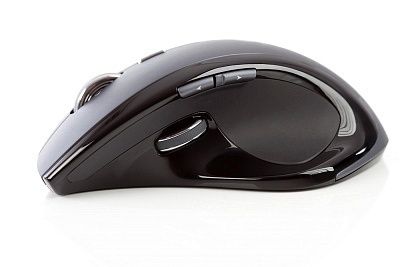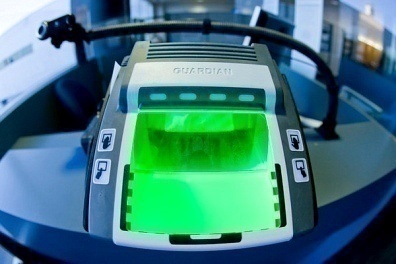The mouse is an extremely popular device. While the majority of mice are connected directly to the computers peripheral input via a cord and the computer’s main power powers it, wireless mice are becoming extremely popular as they give computer users cordless accessibility to their mice and their computer.
Wireless Mouse Technology
Wireless mice usually work via radio frequencies commonly referred to as RF. RF wireless mice require two components to work properly – a radio transmitter and a radio receiver.
RF Transmitter
A radio frequency (RF) transmitter is usually integrated inside the mouse. The mouse records its movements and buttons that are clicked and then sends this information via radio signals to the receiver.
RF Receiver
The radio frequency (RF) receiver usually connects to the computer’s peripheral mouse input. It receives these RF signals, decodes them, and then sends these signals directly to the computer as normal. RF receivers usually come in a few styles. The majority come as built in components that connect to the mouse input, others come as a separate card that is installed in one of the many expansion slots of computers, and the third type of receiver is a separate unit that is connected to a cable going directly to the computer’s peripheral input. Since the technology has been mastered, most wireless mice have integrated receivers that plug into a computer’s peripheral input and are very small in size.
RF Frequencies
Wireless mice mainly use Radio frequencies to transmit data from the mouse to the computer. Earlier mice operated at a frequency of 27 Mhz, which had limited range. Newer mice operate at 2.4 Ghz which gives them greater range, about 100 to 150 feet. These frequencies are very stable and usually have little or no interference in a work or home environment. Pairing and the use of multiple channels helps avoid any interference with other wireless mice.
Bluetooth RF
Another technology that is emerging and is used in wireless mice is Bluetooth RF technology. Bluetooth is commonly known to connect computers to peripherals such as keyboards, printers, PDAs, and headsets. Bluetooth is similar to 802.11b and 802.11g in that it uses 2.4 gigahertz frequencies. However, it also uses software called adaptive frequency hopping to choose frequencies that have no or little interference. Sometimes 802.11b and g receive interference from home appliances such as microwave ovens and cordless telephones. Bluetooth also has decent range, usually about 33 feet.
Advantages of Wireless Mice
RF wireless mice are a great technology because of their overall reliability and stability. Other forms of communication such as Infrared technology need to be in “line of sight” in order to work properly, which makes using them with a mouse impractical.
Some of the reasons that RF technology is great for wireless mice includes the fact that the RF transmitter housed in the mouse requires low power. Usually, RF wireless mice are powered by small, light weight batteries that are either disposable or usually rechargeable with an included recharging dock.
RF wireless mice are also inexpensive. Wireless mice are available for less than $50 and even as low as $25. RF wireless mice are lightweight, so users can move them comfortable and easily.
As with most mice on the market today, wireless mice use optical sensor technology rather than the earlier track-ball system. Optical technology improves accuracy and lets the user use the wireless mouse on almost any surface – an important feature when not tied to the computer by a cord.
Three Types of Wireless Mice
Today, there are three different types of mice – mechanical, optical, and laser. Mechanical mice use a small rubber ball to calculate distance and position. However, these mice are very rarely manufactured due to the fact that they get dirty easily and are slow to process information.
Optical mice are the de facto standard for mice today. They use optical light to calculate distance and position. They are extremely inexpensive, extremely reliable, and process information quickly.
A new technology that is out is Laser Mice. Instead of optical light, they use laser light to precisely calculate movement and position. They are extremely precise and reliable and process information extremely quick. Most gamers use Laser Mice because of their high performance. However, they are much more expensive than optical mice.
Security and Mouse Set Up
Pairing
Pairing is the process of coordinating the mouse’s transmitter with its receiver. It requires both parts to operate on the same frequencies, usually by using the same identification code. Pairing takes place to try to eliminate interference. Some devices automatically pair both devices at start up, while others need to be manually paired.
Security
Security is always an issue when sending information over the air. Most mice effectively secure information by encrypting data. Other methods include frequency hopping to prevent hacking or eavesdropping.




viswa
Hi,
i have wirless mouse, but i lost RF receiver,
shall i get RF receiver separately out side.
patty
hi
WillSpencer
Many wireless mice do use Bluetooth.
Levana
can I use a wireless mouse with a MacBook pro laptop?
how do I set it up?
Is there a program CD that goes along with the mouse when I buy it?
Dev ace
no, you don’t need anything extra,
just plug the RF receiver in any of the USB port and turn on the mouse (small on/off at the bottom of mouse).
enjoy
Scott M Ash
I’m looking into adding wireless mice to my 24 pc lab.
Has there been any study or does anyone have comments on this?
How many are to many? Will that many affect one-another with the RF or enterfear with oneanother?
sean lytton
I have an h.p. wireless mouse I believe it is a laser one
it has a red light on the bottom of it my question is can I buy a replacement reciever seperately because I dont have one for it and if Ican WHERE and how much